Bizarre Iranian 'Loitering SAM' Shown To Russian Defense Minister
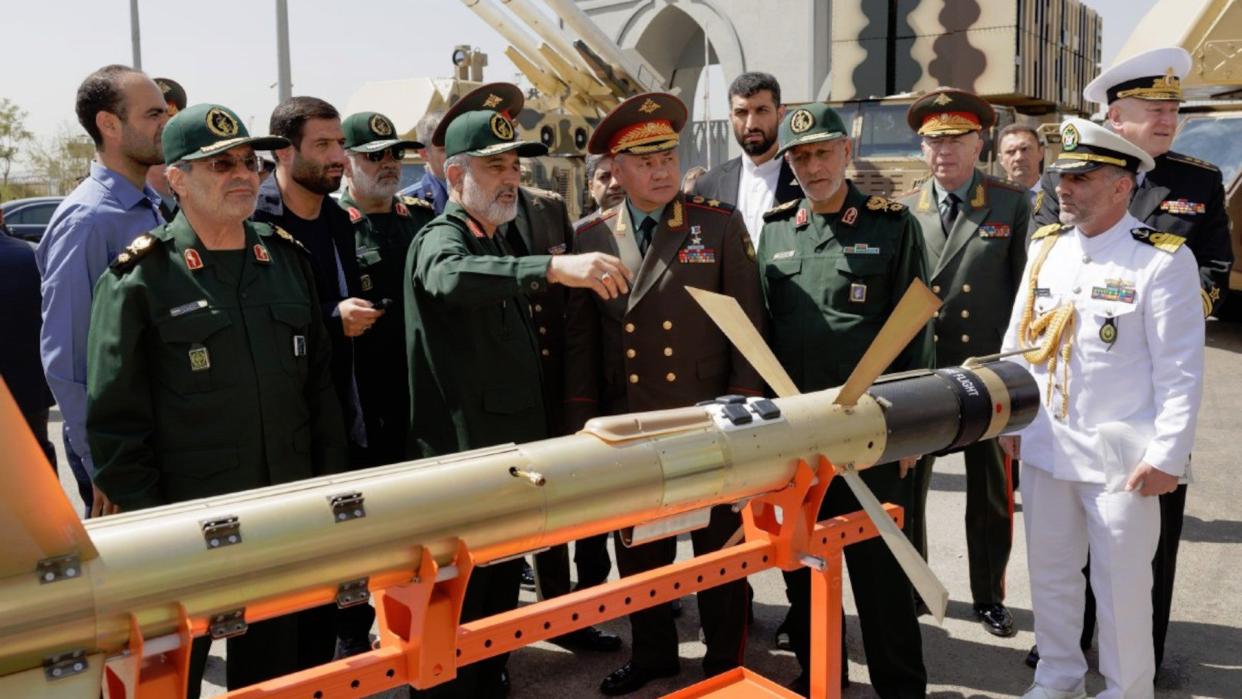
- Oops!Something went wrong.Please try again later.
The Iranian government has shown a curious "loitering" surface-to-air missile known only as the "358" to Russian Defense Minister Sergei Shoigu who is currently visiting the country. This is the first time authorities in Iran have admitted their role in designing this unusual weapon, examples of which have previously been supplied to proxy forces in Yemen and Iraq.
https://www.youtube.com/watch?v=tvKziDRNQlc
Shoigu and his entourage saw the 358 missiles at an exhibition highlighting Iran's Islamic Revolutionary Guard Corps' (IRGC) drone and air defense developments. The head of the IRGC Aerospace Force, Brigadier General Amir-Ali Hajizadeh, accompanied Russia's top defense official at the event.
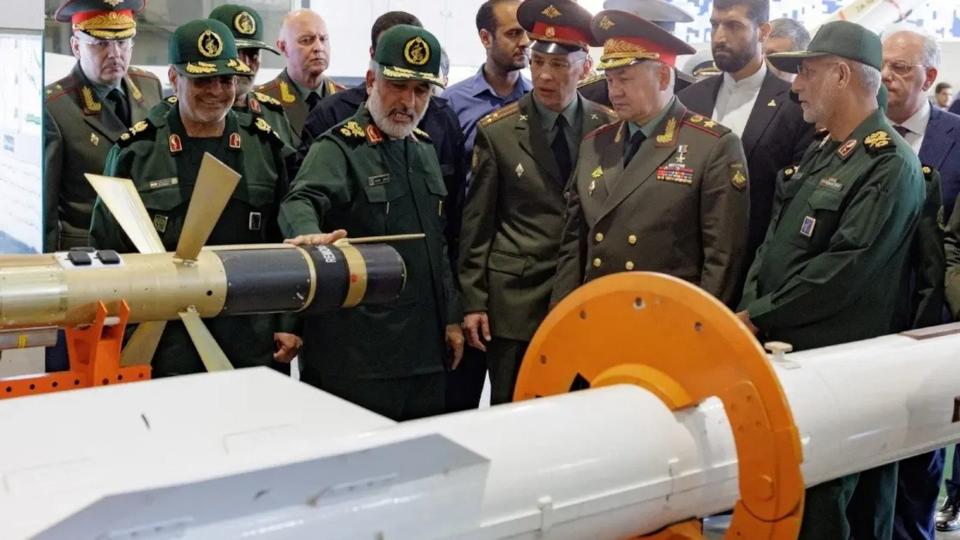
The 358 missile first emerged in 2019 after some of them were seized by the U.S. Navy in the course of operations to disrupt the flow of weapons and other materiel to Iranian-backed Houthi rebels in Yemen. More of these missiles have since been found by U.S. and other military forces when seizing Iranian arms shipments bound for Yemen.
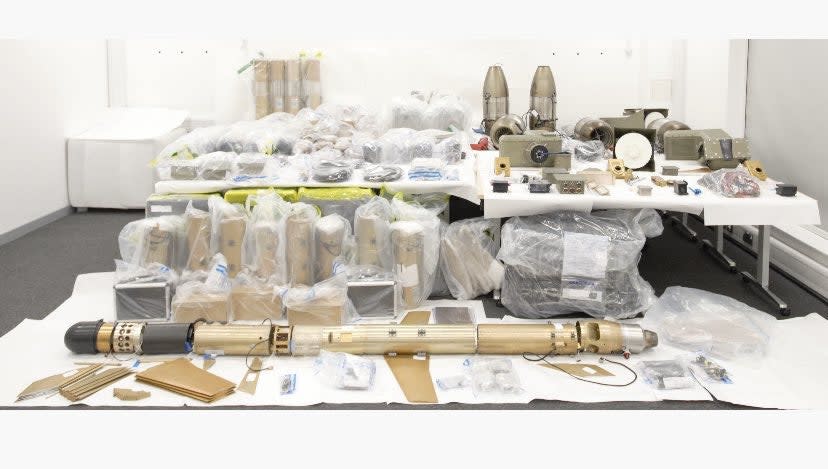
In 2021, Iraqi authorities also said they had recovered at least one of these missiles near Tuz Khurmatu Air Base, which is situated in the northeastern end of the country.
https://twitter.com/arawnsley/status/1451282954995515398
The 358 nomenclature appears to come from an internal U.S. military and/or U.S. Intelligence Community cataloging system for Iranian-made munitions supplied to the Houthis, and possibly other proxy forces. The related designator 351 has also been associated with the Houthi's Quds-1 land-attack cruise missile, another Iranian design.
https://twitter.com/JosephHDempsey/status/1544990114161500160?s=20
Hard details about the 358's capabilities and its mode of operation remain limited. It is around nine feet long and has a slender cylindrical main body. It has three distinct groups of fins for maneuvering and stabilization in flight.
The U.S. military has disclosed in the past that the missile has a satellite navigation-assisted inertial navigation system guidance package, as well as a vertical gyroscope and an air data unit. Many of these components had been previously found on other Iranian drones. A circular 'collar' array of what have been said to be infrared sensors is also plainly visible at the front end of the weapon as is a primary seeker in its nose.
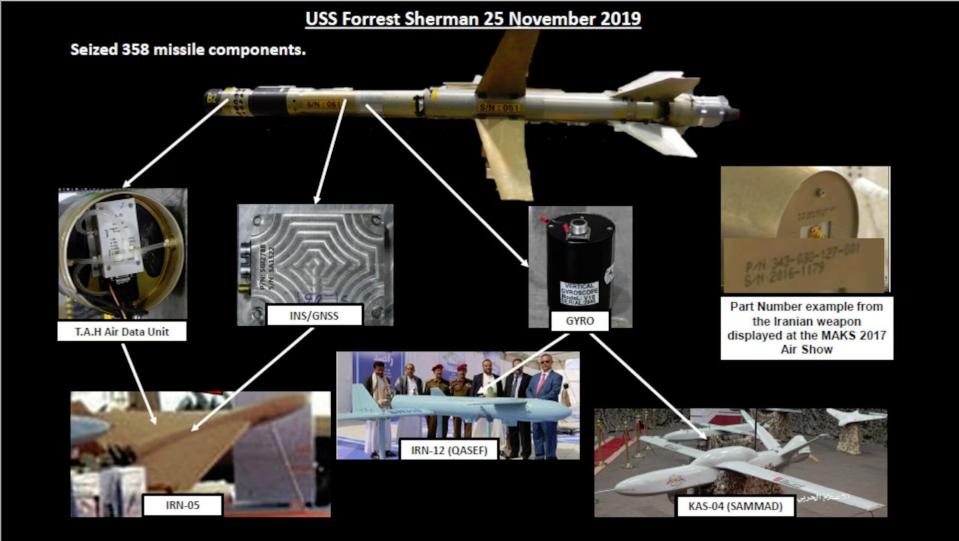
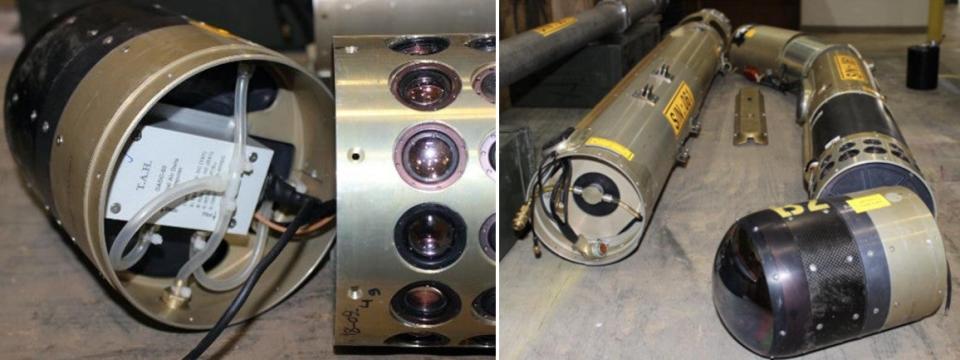
The 358 is understood to be launched from the ground using a solid-fuel rocket booster, which falls away after it burns out. The missile then transitions to an air-breathing propulsion system, possibly a small turbojet, much like a traditional land-attack or anti-ship cruise missile. Air inlets are visible along the body at the rear of the missile, molded into the engine section.
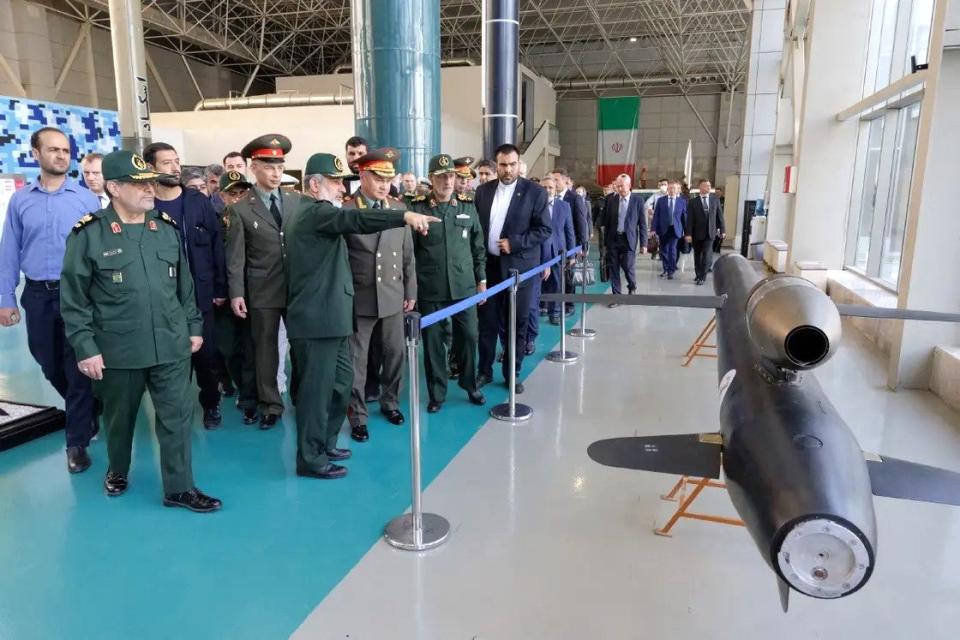
However, the infrared sensor ring looks more akin to features often found on surface-to-air and air-to-air missiles that are used to trigger the weapon's warhead in proximity to the target. These kinds of missiles typically do not 'cruise' and fly are much higher speeds than can be provided by a typical air-breathing propulsion system. As such, the U.S. government has long assessed the 358 to be a highly unusual air defense weapon. The Iranians seem to have now confirmed this by showing Shoigu examples of the 358 on display alongside other surface-to-air missile systems.
Beyond its core design, past reports have said that the 358 further deviates from typical surface-to-air missiles in that is apparently designed to fly at low speed to a specified location and then loiter there until its fuel runs out. "The weapon flies in a figure-eight pattern and looks for targets," The New York Times reported in a story citing unnamed U.S. military officials back in 2020.
How exactly the 358 missile spots and tracks its targets is unclear. The 2020 New York Times story said that the weapon sensor ring looked to be designed to help defeat existing countermeasures meant to confront infrared-homing surface-to-air missiles, like directional infrared countermeasures systems and decoy flares, implying that it was, in part, a seeker.
However, it is not immediately clear how such a conclusion was made or how such a setup would overcome countermeasures. If the two rows of sensors are redundant, but work on different wavelengths, this could help reduce the impact of one countermeasure type over another. It's also possible that one row is made up of infrared sensors as part of the guidance systems and the other are laser proximity fuze sensors, like those on many traditional SAMs and air-to-air missiles. One other possibility is that the 'collar' array, or at least one row of those sensors, works to detect a potential target initially and then cues the primary sensor in the nose onto that target to discriminate it and execute an attack if warranted.
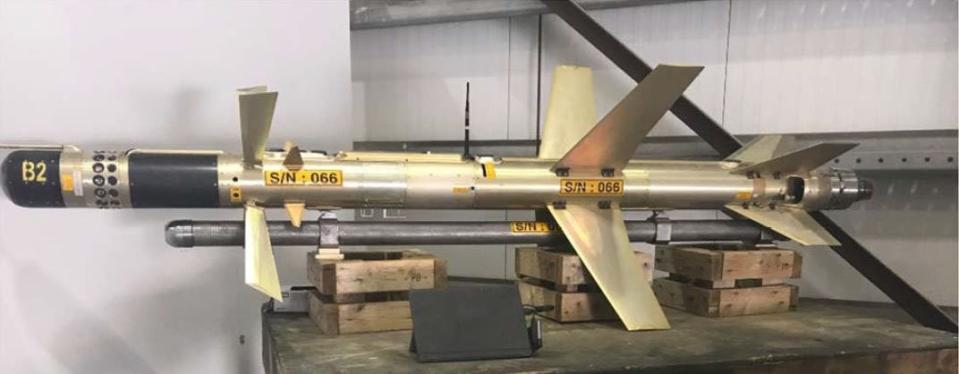
It is, of course, very possible that multiple versions of the 358 could exist now, including ones that leverage some form of passive homing and/or that can receive updates from offboard sensors. At least one known example, seen above, has a particularly prominent antenna on the back, which could provide for some level of basic semi-autonomous control.
Altogether, the viability of this concept remains an open question. The low speed of the missile already means it is not useful for engaging fast-moving combat jets in many scenarios and is better suited for attempting to intercept slower targets like helicopters and drones.
To date, there is no hard evidence of a 358 shooting down anything, despite reports that attempts have been made. A "United States military official said that the 358 missiles from Iran had been fired against American drones flying in Yemeni airspace," according to the 2020 New York Times report.
Iranian Back Houthi rebels have succeeded in shooting down U.S. and Saudi Arabian drones over Yemen using traditional surface-to-missiles. The group has also claimed to have shot down multiple combat jets belonging to the Saudi Arabian-led coalition over the years, including Saudi F-15s and Tornados, with various factory-produced and improvised air defense systems.
https://twitter.com/victorsan1974/status/914591695416815616
Still, the underlying concept behind the 358 missile is very intriguing. If the weapon works as described, they could be launched into forward areas where drones or helicopters are known or expected to travel through, and hunt and kill them without any need for additional advanced offboard sensors. This could be particularly useful for engaging incoming drones, which can be very hard to spot and engage with traditional air defense systems.
Beyond all this, groups of 358s flying figure-eight orbits would just present additional hazards an opponent would have to contend with or attempt to plan around, which could be problematic seeing that they can fly out to remote locations. If the 358 is low cost, then it could be even easier to deploy large numbers of them at once to increase the probability of success and otherwise try to disrupt enemy air operations.
It does not appear to require much in the way of logistical footprint to employ the 358 missiles, either. When Iraqi authorities seized the 358 near in 2021, they also found a simple launcher consisting of a crude rail attached to a base weighed down with cinder blocks.
https://twitter.com/AuroraIntel/status/1451146312909524993
At the IRGC expo that Russian Defense Minister Shoigu recently attended, a pair of 358 missiles were seen on more robust launch rails fitted in the back of a truck. That launch system also looks as if it might be designed to look outwardly like any other commercial truck when in transit, helping to reduce vulnerability, as well as add flexibility. The idea of hiding launchers for missiles and munitions inside commercial trucks or shipping containers is, of course, not a new tactic, as North Korea showed just earlier this month.
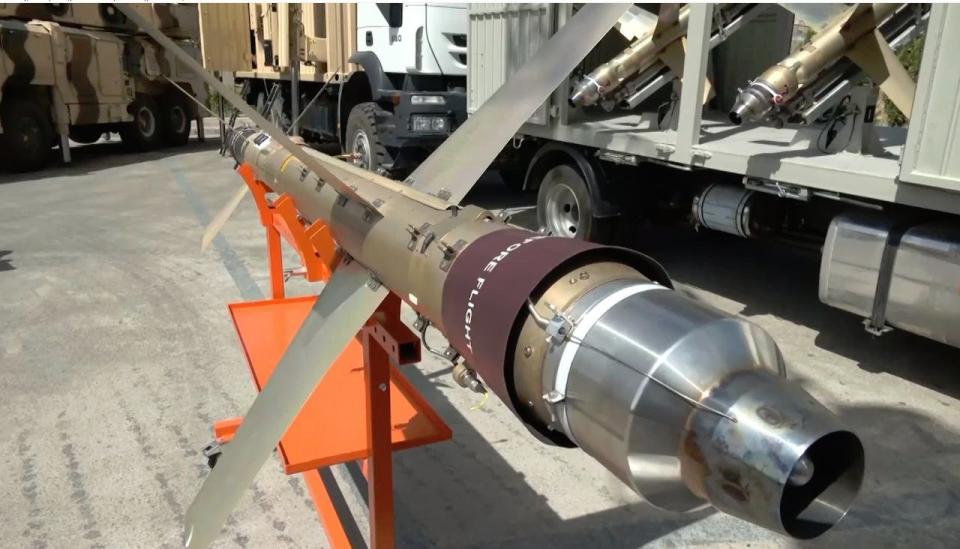
Whether or not Shoigu's tour in Tehran indicates the Russian military is in line to receive 358 missiles, whatever their exact capabilities might be, is unknown. For the reasons already noted, this could be a very relevant weapon for Russia, at least in basic concept, for countering Ukraine's long-range strikes, including those deep inside its territory.
Shoigu has been meeting with various top Iranian defense and security officials since arriving in the country yesterday. Iran has been a key ally of Russia since the beginning of its all-out invasion of Ukraine last year.
Iran has notably supplied large numbers of kamikaze drones, which have become one of the Russian military's primary tools for striking Ukrainian cities and other critical targets. Iranian authorities have also helped Russia work to establish domestic production of these munitions. There have long been concerns that Iran could provide Russia with valuable stocks of short-range ballistic missiles, as well. Russian authorities have, in turn, moved forward on new arms sales to Iran, including an expected batch of Su-35 Flanker-E fighters, and have pledged further cooperation with their counterparts in Tehran.
"We are aiming at an entire range of planned activities, despite opposition from the United States and its Western allies," Shoigu said during his current visit to Iran, according to Russia's Interfax news agency. "Sanctions pressure on Russia and Iran shows its futility, while Russian-Iranian interaction is reaching a new level."

"Our relations in the fields of defense and security have attained unprecedented development over the past decade," Iranian Defense Minister Mohammad Reza Ashtiani also said during his meeting with Shoigu today, Interfax reported. "Your visit and the signing of the memorandum of mutual understanding signifies a brand new period in our bilateral relations."
If nothing else, Iran has now publicly acknowledged the 358 missile, and more information about it may begin to emerge as a result.
Contact the author: joe@thedrive.com

